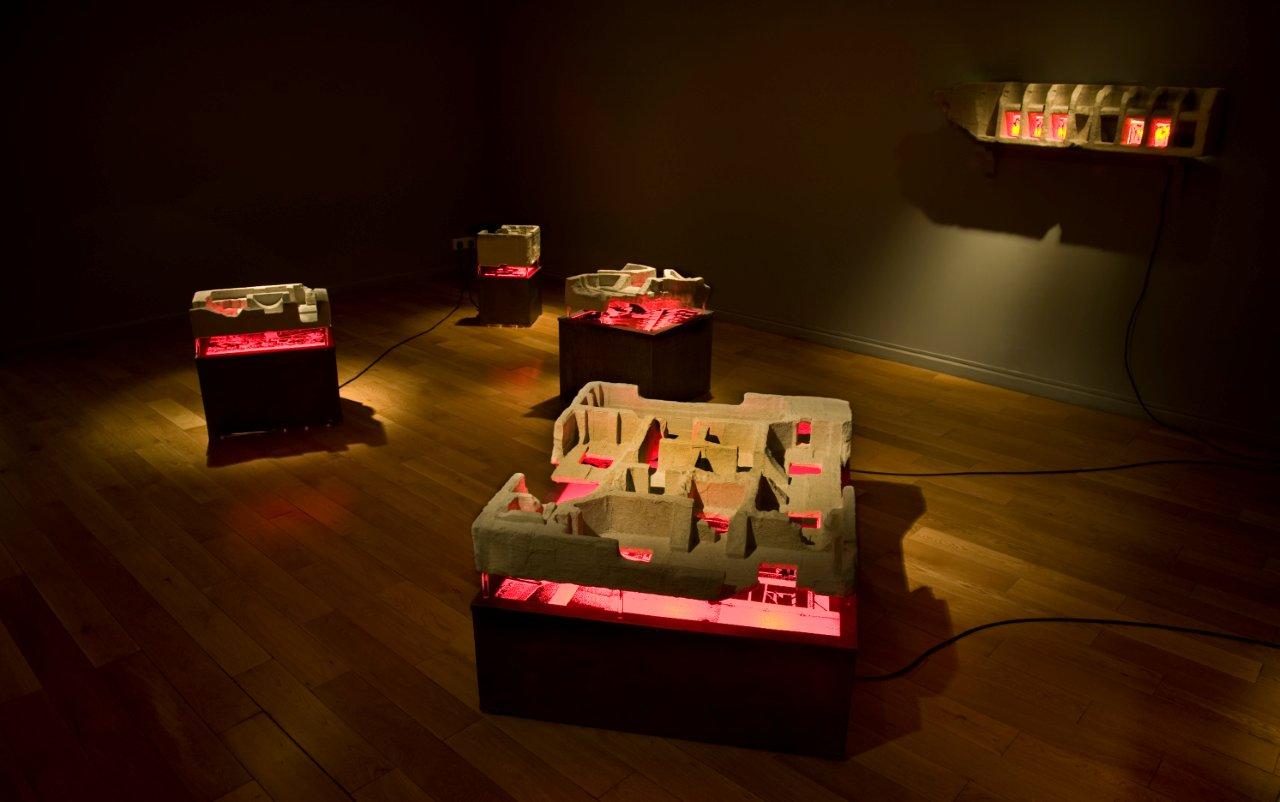Bad things happen. To everyone. But is it not relative? Is it what you think? This is the question asked by late artist Rummana Hussain in her part-performative work of 1998 and is the title of the exhibition on view at the Kiran Nadar Museum of Art. The show explores notions of identity drawn from territory, ethnicity, or gender, placing the viewer within the frame of violence and injustice. Each artist successfully employs art as a means of activism and resistance.
The exhibition opens with a clay head sculpted by Himmat Shah that, according to curator Roobina Karode, evokes the sentiment of the exhibit that is also its subtitle: "Ruminations on time, memory and site." The ambiguity held by the head, and its suggestion of a larger historical context or a more specific excavated site leads to N.N. Rimzon's larger-than-life meditative sculpture, The Inner Voice (1992). Comprising a Jain tirthankara standing in the posture identified with final release from the body, surrounded by a semi-circle of cast iron swords, eloquently resilient to impending harm. To the right is Rummana Hussain's Is It What You Think. On display is a selection of five black and white frames wherein she photographs herself decorated with thick black hair and kohl-lined eyes, emerging from behind black drapes suggestive of the hijab, to question practised conventions of both Islam and of womanhood. Accompanying the images is a framed text of questions directed at the reader, some of which ask: "Have you defined her, slotted her? Does she threaten you?" Powerful as the work is, it poignantly leads to Vivan Sundaram's room-sized installation Memorial (1993-2014) that is based on a photograph taken by the photojournalist Hoshi Lal of a Muslim man killed in the Hindu-Muslim riots that plagued Mumbai in 1992-93. His fallen body leans against a garbage container that in part resembles a coffin and in part stage prop. Within the constructed architecture are displayed versions of the image pierced with iron nails, arranged around a central gateway memorialising the "fallen mortal" and leading squarely to an embalmed and entombed figure.
We are confronted next with another of Rummana Hussain's works, Fragments (1993) and Anita Dube's Illegal (2004-05), the former constructed of broken and shattered earth that mirrors a loss of self, while the latter comprises a set of six lightboxes provocatively illuminating in red disputed ideas of geographical site and dwelling. The implicit undoing suggested by these relics is referenced further in the paper works of Ashim Purkayashtha, in the painted tableaus of Surendran Nair and in the emotive watercolours of Arpita Singh.



Zarina Hashmi and Gulammohammad Sheikh present works that serve as travelogues, that reveal stories through both minimalistic form and painted narration. While Hashmi's works reflect the changing nuances of home and belonging, Sheikh's Kaavad — Ayodhya Mirage (2004) represents a traditional mobile shrine displayed as an accordion book that, like Hussain and Sundaram's art, tells tales from the communal unrest after the Babri demolition.
Amar Kanwar's eight-channel video installation The Lightening Testimonies (2007) is chilling, to say the least. Narrating histories of violence against women, the work is a retelling of human suffering, how it is resisted and overcome. With both passionate and contemplative imagery drawn from cases of civil war in Kashmir to the belligerent protests against the rape of a minor girl in Imphal, I would have assumed this as a rather melancholic end to the exhibition, but its deep engagement with the viewer leaves a strain with which to comprehend the works that follow. Consequently, Navjot Altaf's Lacuna in Testimony (2003), Shilpa Gupta's Someone Else (2011-12) and Idris Khan's God is Great (2011) urge us to think of how we perceive traumatic experiences and how these are recorded or memorised in history. How do we relinquish ourselves from guilt and wherein lies our faith? Do the artworks then serve as universal testimonials of social and cultural victimisation? Furthermore, do they have the power to change or to heal?
Is It What You Think? deserves a visit for both art aficionado and novice, not only for the quality of art exhibited, and the way it is mediated to the public, but also because the issues addressed are current to a country on the brink of new governance, hopeful of a brighter tomorrow.